How to Choose the Right House Transformer: Voltage, kVA, and Load Considerations?
Are you struggling to select the right transformer for your residential project? Choosing the wrong one can lead to power disruptions, safety hazards, and unexpected costs. But how can you ensure you’re making the right choice for your specific needs?
Choosing the right house transformer involves considering four key factors: input and output voltage levels, total load (kVA rating), phase configuration (single or three-phase), and installation type (pole-mounted or pad-mounted). The correct selection ensures safe and efficient power distribution, prevents overloading, and optimizes long-term operational costs. Proper sizing and specification are crucial for meeting project requirements, complying with local regulations, and future-proofing residential power systems.
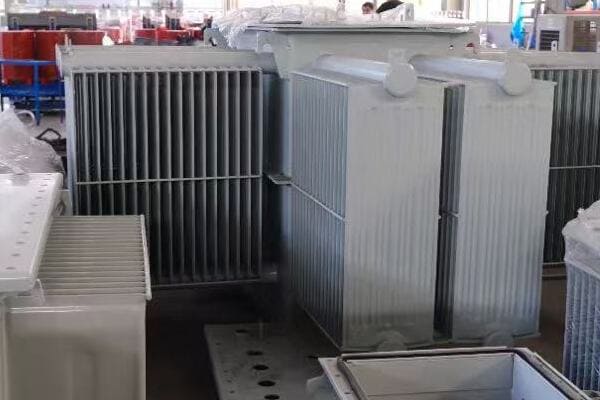
In this comprehensive guide, I’ll walk you through the step-by-step process of selecting the right transformer for your residential project. Whether you’re an electrical engineer, a project manager, or a procurement specialist, this article will provide you with the knowledge to make informed decisions and avoid common pitfalls in transformer selection.
Why Choosing the Right House Transformer Matters for Your Project?
Have you ever wondered why some residential areas experience frequent power outages or why electricity bills in certain complexes are unexpectedly high? The root cause often traces back to an improperly selected transformer. But why exactly is choosing the right transformer so crucial for your project’s success?
Selecting the appropriate house transformer is critical because it directly impacts power reliability, energy efficiency, and overall project costs. An undersized transformer can lead to overheating, frequent outages, and premature equipment failure. Conversely, an oversized unit wastes energy and inflates initial costs. The right transformer ensures stable power supply, meets safety standards, accommodates future load growth, and optimizes energy efficiency. Proper selection is essential for project success, regulatory compliance, and long-term operational efficiency.
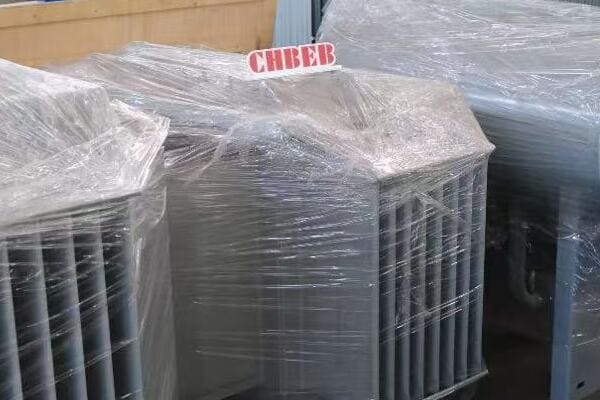
Key Aspects of Transformer Selection Importance
Let’s explore the main reasons why choosing the right transformer is crucial:
- Power Reliability and Quality
- Energy Efficiency and Operational Costs
- Safety and Regulatory Compliance
- Future Load Growth Accommodation
- Project Budget and Timeline Implications
Power Reliability and Quality
Ensuring stable and consistent power supply:
- Prevents voltage fluctuations and power interruptions
- Maintains proper voltage levels for all connected devices
- Reduces the risk of equipment damage due to power issues
I recently consulted on a project where an undersized transformer led to frequent brownouts during peak usage hours. Replacing it with a properly sized unit resolved the issues and significantly improved resident satisfaction.
Energy Efficiency and Operational Costs
Optimizing long-term performance:
- Reduces energy losses through proper transformer efficiency
- Minimizes unnecessary heat generation
- Lowers overall electricity costs for the residential complex
During a recent energy audit, we discovered that oversized transformers in a housing development were contributing to higher-than-expected energy bills. Right-sizing the transformers led to substantial annual savings for the residents.
Safety and Regulatory Compliance
Meeting standards and ensuring resident safety:
- Complies with local electrical codes and standards
- Reduces fire risks associated with overloading
- Ensures proper grounding and protection mechanisms
Here’s a quick overview of how proper transformer selection impacts various aspects:
| Aspect | Impact of Correct Selection | Consequences of Incorrect Selection |
|---|---|---|
| Reliability | Stable power supply | Frequent outages, voltage issues |
| Efficiency | Optimal energy use | Higher energy losses, increased costs |
| Safety | Meets all standards | Potential fire hazards, code violations |
| Longevity | Extended equipment life | Premature failure, frequent replacements |
Future Load Growth Accommodation
Planning for long-term needs:
- Allows for future expansion of the residential area
- Accommodates increasing power demands (e.g., EV charging)
- Prevents the need for costly upgrades in the near future
Project Budget and Timeline Implications
Balancing initial costs with long-term benefits:
- Avoids costly oversizing or undersizing mistakes
- Prevents delays due to equipment replacement or retrofitting
- Optimizes the overall project budget
Key points about the importance of proper transformer selection:
- It directly impacts the reliability and quality of power supply
- Proper sizing leads to significant energy and cost savings
- Correct selection ensures safety and regulatory compliance
- It allows for future growth and increased power demands
- Choosing the right transformer optimizes project budgets and timelines
In my experience, the importance of correct transformer selection often becomes most apparent when things go wrong. I recall a multi-family housing project where the developer opted for a lower-capacity transformer to cut costs. Within a year, they faced frequent outages and eventually had to replace the unit, incurring far greater expenses than if they had chosen correctly from the start.
For example, in a recent smart community project, we carefully selected transformers that not only met current needs but also accommodated future smart grid integration and increased EV charging capacity. This foresight in selection has positioned the community for sustainable growth and technological advancements without requiring major infrastructure changes.
As we move on to discuss the specific steps in selecting the right transformer, remember that this decision impacts not just immediate project success, but the long-term satisfaction, safety, and efficiency of the entire residential development.
Step 1 – Confirm the Input and Output Voltage Levels?
Have you ever plugged in a device from another country and watched it fail due to voltage mismatch? Now imagine that scenario on a much larger scale – that’s what happens when transformer voltages are incorrectly specified. But how do you ensure you’re getting the right voltage levels for your residential project?
Confirming input and output voltage levels is the first crucial step in selecting a house transformer. Input voltage typically ranges from 4kV to 34.5kV, depending on the local distribution network. Output voltage for residential use is usually 120/240V in North America or 230/400V in many other countries. It’s essential to verify these voltages with your local utility company and ensure compliance with regional standards. Proper voltage matching ensures safe and efficient power distribution to homes.

Key Aspects of Voltage Level Confirmation
Let’s break down the process of confirming voltage levels:
- Understanding Input Voltage
- Determining Output Voltage Requirements
- Regional Voltage Standards
- Voltage Drop Considerations
- Special Voltage Requirements
Understanding Input Voltage
Identifying the primary voltage from the utility:
- Typically ranges from 4kV to 34.5kV
- Varies based on local power distribution infrastructure
- Must be confirmed with the utility company
I recently worked on a project where the developer assumed a 12kV input, only to discover the local grid operated at 13.8kV. This early catch saved us from ordering the wrong equipment and potential project delays.
Determining Output Voltage Requirements
Matching residential power needs:
- Common residential voltages: 120/240V (North America), 230/400V (Europe, Asia)
- Single-phase vs. three-phase considerations
- Specific appliance or equipment requirements
During a recent international project, we had to carefully consider the mix of 230V and 110V appliances in a luxury development. We ended up specifying transformers with dual output capabilities to accommodate diverse resident needs.
Regional Voltage Standards
Adhering to local regulations:
- North American standards (ANSI)
- European standards (IEC)
- Other regional specifications
Here’s a quick reference for common residential voltage standards:
| Region | Input Voltage | Output Voltage | Standard |
|---|---|---|---|
| North America | 7.2kV – 34.5kV | 120/240V | ANSI |
| Europe | 10kV – 20kV | 230/400V | IEC |
| China | 10kV | 220/380V | GB |
| India | 11kV | 230/400V | IS |
Voltage Drop Considerations
Accounting for voltage loss in distribution:
- Calculating expected voltage drop over distance
- Ensuring end-of-line voltage meets minimum requirements
- Adjusting transformer taps if necessary
Special Voltage Requirements
Addressing unique project needs:
- Mixed-use developments with both residential and commercial spaces
- Specialized equipment or amenities requiring non-standard voltages
- Future-proofing for potential changes in voltage standards
Key points about confirming voltage levels:
- Input voltage must be verified with the local utility
- Output voltage should match residential requirements and standards
- Regional voltage standards vary and must be adhered to
- Voltage drop over distance needs to be considered
- Special project requirements may necessitate custom voltage configurations
In my experience, voltage confirmation is an area where local knowledge is invaluable. I recall a project in a developing region where the nominal utility voltage differed significantly from actual delivered voltage. By working closely with local engineers and conducting on-site measurements, we were able to specify transformers that could handle the real-world conditions, ensuring stable power for residents.
For example, in a recent smart home community project, we had to consider not just standard residential voltages but also the power requirements for community-wide IoT systems and EV charging stations. This led us to specify a more complex transformer setup with multiple output voltages, ensuring the infrastructure could support both current and future technological needs.
As we move on to discuss load calculations and kVA ratings, remember that getting the voltage right is the foundation of proper transformer selection. It’s a step that requires careful consideration of both current standards and future possibilities.
Step 2 – Calculate the Total Load to Determine kVA Rating?
Have you ever tried to power too many appliances at once and tripped a circuit breaker? Now imagine that scenario for an entire residential complex. How do you ensure your transformer can handle the combined power needs of multiple homes without overloading?
Calculating the total load is crucial for determining the appropriate kVA rating of a house transformer. This involves summing the power requirements of all electrical devices in the homes, considering diversity factors, and adding a safety margin. For residential areas, a general rule is 5-7 kVA per household, but this can vary based on lifestyle and appliance usage. Proper load calculation prevents overloading, ensures efficient operation, and allows for future growth. The kVA rating directly impacts the transformer’s capacity to meet the community’s power demands safely and efficiently.
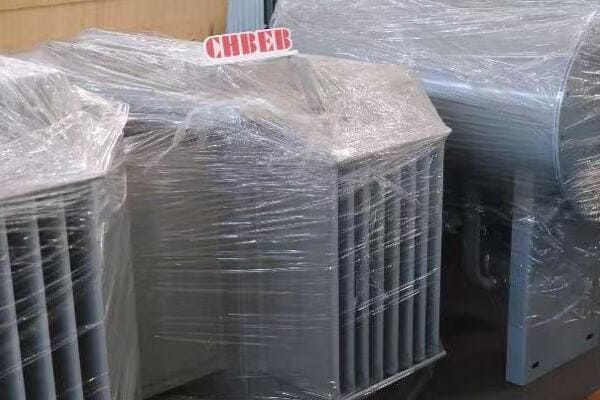
Key Aspects of Load Calculation and kVA Rating Determination
Let’s break down the process of calculating load and determining kVA rating:
- Identifying All Electrical Loads
- Applying Diversity and Demand Factors
- Considering Future Load Growth
- Calculating Total kVA Requirement
- Selecting the Appropriate Transformer Size
Identifying All Electrical Loads
Listing all power-consuming devices:
- Major appliances (HVAC, water heaters, refrigerators)
- Lighting fixtures
- Small appliances and electronics
- Common area equipment for multi-family dwellings
I once consulted on a project where the developer initially overlooked the power needs of common area amenities like elevators and pool pumps. This oversight could have led to significant underestimation of the required transformer capacity.
Applying Diversity and Demand Factors
Accounting for real-world usage patterns:
- Not all devices operate simultaneously
- Peak usage times and seasonal variations
- Typical residential diversity factor ranges from 0.5 to 0.8
During a recent energy audit of a large apartment complex, we found that the actual peak load was only about 60% of the theoretical maximum. This information helped us right-size replacement transformers, saving on both initial costs and long-term energy efficiency.
Considering Future Load Growth
Planning for increased power needs:
- Potential for home expansions or renovations
- Increasing adoption of electric vehicles
- Growing use of high-power electronics and appliances
Here’s a simplified guide for estimating load growth:
| Time Frame | Residential Load Growth Factor |
|---|---|
| 5 Years | 1.1 – 1.2 |
| 10 Years | 1.2 – 1.3 |
| 20 Years | 1.3 – 1.5 |
Calculating Total kVA Requirement
Putting it all together:
- Sum of all loads × Diversity factor × Growth factor
- Adding safety margin (typically 15-25%)
- Converting Watts to kVA (if necessary)
Selecting the Appropriate Transformer Size
Choosing the right capacity:
- Rounding up to the nearest standard kVA rating
- Considering transformer efficiency at different load levels
- Balancing between current needs and future growth
Key points about load calculation and kVA rating determination:
- Comprehensive identification of all electrical loads is crucial
- Diversity and demand factors reflect real-world usage patterns
- Future load growth must be anticipated in the calculations
- The total kVA requirement includes a safety margin
- Final transformer size should be a standard rating above the calculated need
In my experience, accurate load calculation is as much an art as it is a science. I recall a project for a high-end residential community where the initial calculations based on "typical" usage severely underestimated the actual load. By conducting detailed surveys of potential residents’ lifestyles and appliance preferences, we were able to specify a transformer that comfortably met their above-average power needs.
For example, in a recent smart home development project, we had to factor in not just traditional loads but also the power requirements for extensive home automation systems, electric vehicle charging stations, and community-wide IoT infrastructure. This forward-thinking approach in load calculation ensured that the selected transformers could support both current and future technological advancements in the community.
As we move on to discuss the choice between single-phase and three-phase transformers, remember that accurate load calculation is the foundation for all subsequent decisions in transformer selection. It’s a step that requires careful consideration of both current usage patterns and future possibilities.
Step 3 – Choose Between Single-Phase and Three-Phase Transformers?
Have you ever wondered why some homes have two wires coming in while others have three? This difference often reflects the choice between single-phase and three-phase power. But how do you decide which is right for your residential project, and what are the implications of this choice?
Choosing between single-phase and three-phase transformers depends on the power requirements and distribution system of the residential area. Single-phase transformers (typically up to 167 kVA) are suitable for individual homes and small residential groups. Three-phase transformers (from 15 kVA to several MVA) are ideal for larger residential complexes, apartments, and mixed-use developments. The choice affects power capacity, efficiency, and the types of appliances that can be used. Three-phase systems offer more power and better efficiency for large loads but require more complex wiring.
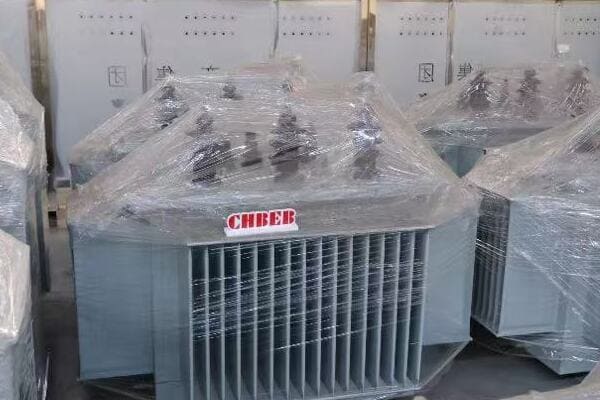
Key Aspects of Choosing Between Single-Phase and Three-Phase
Let’s explore the main considerations in this decision:
- Power Requirements and Capacity
- Types of Loads and Appliances
- Efficiency and Power Quality
- Installation and Maintenance Considerations
- Cost Implications
Power Requirements and Capacity
Matching transformer type to power needs:
- Single-phase: Suitable for loads up to about 167 kVA
- Three-phase: Ideal for larger loads, from 15 kVA to several MVA
- Consideration of individual home vs. community-wide power needs
I recently worked on a project where we initially planned for single-phase distribution. However, after calculating the total load including common areas and future EV charging stations, we realized a three-phase system was necessary to meet the community’s power demands efficiently.
Types of Loads and Appliances
Accommodating different electrical equipment:
- Single-phase: Most household appliances and electronics
- Three-phase: Large HVAC systems, elevators, industrial equipment
During a recent consultation for a mixed-use development, we had to carefully consider the power needs of both residential units and commercial spaces. The diverse load requirements led us to choose a three-phase system to accommodate everything from home appliances to commercial kitchen equipment.
Efficiency and Power Quality
Balancing performance and energy use:
- Three-phase systems generally more efficient for large loads
- Better voltage stability in three-phase systems
- Reduced harmonics and improved power factor in three-phase
Here’s a quick comparison of single-phase and three-phase systems:
| Aspect | Single-Phase | Three-Phase |
|---|---|---|
| Typical Capacity | Up to 167 kVA | 15 kVA to several MVA |
| Suitable For | Individual homes, small groups | Large complexes, mixed-use |
| Efficiency for Large Loads | Lower | Higher |
| Wiring Complexity | Simpler | More complex |
| Voltage Stability | Good | Better |
Installation and Maintenance Considerations
Practical aspects of implementation:
- Simpler wiring and installation for single-phase
- More complex but more flexible distribution with three-phase
- Maintenance requirements and accessibility considerations
Cost Implications
Balancing initial and long-term expenses:
- Generally lower initial cost for single-phase systems
- Potentially lower long-term costs with three-phase for large loads
- Consideration of utility rates for different service types
Key points about choosing between single-phase and three-phase:
- Power capacity requirements are a primary factor in the decision
- The types of appliances and equipment used influence the choice
- Three-phase systems offer better efficiency for large loads
- Installation complexity differs between the two options
- Both initial and long-term costs should be considered
In my experience, the choice between single-phase and three-phase often comes down to future-proofing. I recall a suburban development project where we initially considered single-phase distribution to save on costs. However, after discussions about potential future amenities and the growing trend of home EV charging, we opted for a three-phase system. This decision, while more expensive initially, has proven invaluable as the community has grown and power demands have increased.
For example, in a recent smart home community project, we implemented a hybrid approach. We used three-phase distribution for the main infrastructure and larger homes, while smaller units remained on single-phase. This flexible design allowed us to meet diverse power needs efficiently while keeping costs manageable for different housing types within the same development.
As we move on to discuss installation types, remember that the choice between single-phase and three-phase transformers is not just about current needs, but also about anticipating future power requirements and ensuring long-term flexibility in your residential power distribution system.
Step 4 – Consider Installation Type: Pole-Mounted or Pad-Mounted?
Have you ever noticed those cylindrical objects on utility poles or large green boxes in your neighborhood? These are different types of transformer installations. But how do you decide which type is right for your residential project, and what factors should you consider?
Choosing between pole-mounted and pad-mounted transformers depends on factors like available space, aesthetics, safety considerations, and local regulations. Pole-mounted transformers are typically used in rural areas or older neighborhoods with overhead power lines. They’re cost-effective but more exposed to weather. Pad-mounted transformers, housed in ground-level enclosures, are common in newer developments with underground power distribution. They offer better protection and aesthetics but require more ground space. The choice impacts installation costs, maintenance accessibility, and overall system reliability.
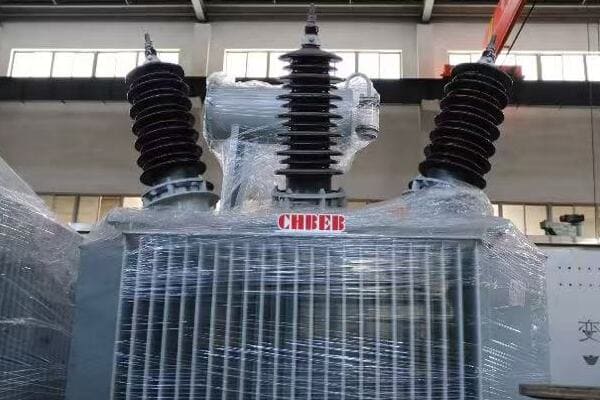
Key Aspects of Choosing Installation Type
Let’s explore the main considerations in deciding between pole-mounted and pad-mounted installations:
- Space and Location Requirements
- Safety and Accessibility
- Aesthetic Considerations
- Environmental Factors
- Cost and Installation Complexity
Space and Location Requirements
Assessing available area and terrain:
- Pole-mounted: Requires minimal ground space, suitable for areas with limited land
- Pad-mounted: Needs dedicated ground area, often used in planned developments
I recently consulted on a project in a densely populated urban area where space was at a premium. Despite the higher cost, we opted for pole-mounted transformers to preserve valuable ground space for other community amenities.
Safety and Accessibility
Balancing protection and maintenance ease:
- Pole-mounted: More exposed but easier to access for repairs
- Pad-mounted: Better protected from physical damage and weather, but may require special access for maintenance
During a recent renovation of an older neighborhood, we faced a choice between replacing old pole-mounted units or transitioning to pad-mounted. We ultimately chose pad-mounted transformers for their enhanced safety features, particularly important in an area with frequent storms.
Aesthetic Considerations
Integrating with community design:
- Pole-mounted: More visible, can affect skyline aesthetics
- Pad-mounted: Can be concealed with landscaping, better for maintaining a clean community appearance
Here’s a quick comparison of pole-mounted and pad-mounted transformers:
| Aspect | Pole-Mounted | Pad-Mounted |
|---|---|---|
| Space Required | Minimal ground space | Dedicated ground area |
| Visibility | More visible | Can be concealed |
| Weather Exposure | Higher | Lower |
| Installation Cost | Generally lower | Usually higher |
| Maintenance Access | Easier | May require special access |
Environmental Factors
Adapting to local conditions:
- Pole-mounted: Better in flood-prone areas but more susceptible to wind and lightning
- Pad-mounted: Offers better protection against most environmental factors but needs flood consideration in low-lying areas
Cost and Installation Complexity
Balancing budget and practicality:
- Pole-mounted: Often less expensive to install, especially in areas with existing poles
- Pad-mounted: Higher initial cost but can be more cost-effective long-term in planned developments
Key points about choosing between pole-mounted and pad-mounted installations:
- Space availability and community layout are crucial factors
- Safety considerations differ between the two types
- Aesthetic impact can be significant, especially in residential areas
- Environmental conditions play a role in the decision
- Both initial and long-term costs should be evaluated
In my experience, the choice of installation type often comes down to a balance between immediate needs and long-term vision. I recall a project in a transitioning neighborhood where we initially leaned towards pole-mounted transformers for cost reasons. However, after considering the area’s development plans and the community’s desire for a more modern aesthetic, we opted for pad-mounted units. This decision, while more expensive initially, aligned better with the neighborhood’s future goals and has been well-received by residents.
For example, in a recent master-planned community project, we implemented a hybrid approach. We used pad-mounted transformers in the central, more densely populated areas for aesthetics and safety, while opting for pole-mounted units in the outskirts where space was less of a concern. This flexible strategy allowed us to optimize both cost and functionality across different parts of the development.
As we move on to discuss recommended transformer models for residential projects, remember that the choice between pole-mounted and pad-mounted installations impacts not just the immediate project but the long-term infrastructure and aesthetics of the residential area. It’s a decision that requires careful consideration of both current needs and future community development plans.
Recommended Transformer Models for Residential Projects?
Are you feeling overwhelmed by the myriad of transformer options available for your residential project? With so many models and specifications, how can you be sure you’re choosing the best fit for your specific needs? Let’s break down some top recommendations to make your decision easier.
For residential projects, recommended transformer models vary based on project size and power requirements. For small to medium developments, single-phase pad-mounted transformers like the CHBEB S11-M series (10-167 kVA) are ideal. Larger complexes benefit from three-phase models such as the CHBEB S13-M series (30-2500 kVA). Key features to look for include high efficiency (>98%), low noise levels (<45 dB), and compliance with standards like IEC 60076. Always consider factors like voltage rating, kVA capacity, and installation type when selecting a model.

Key Aspects of Recommended Transformer Models
Let’s explore some top transformer models and their best applications:
- Single-Phase Residential Transformers
- Three-Phase Residential Transformers
- Energy-Efficient Models
- Smart and IoT-Enabled Transformers
- Customization Options
Single-Phase Residential Transformers
Ideal for individual homes and small groups:
- CHBEB S11-M Series: 10-167 kVA, high efficiency, low noise
- Features: Aluminum or copper windings, ONAN cooling, taps for voltage adjustment
I recently specified the CHBEB S11-M 100 kVA model for a small suburban development. Its compact design and high efficiency made it perfect for the project’s limited space and energy-saving goals.
Three-Phase Residential Transformers
Suitable for larger complexes and mixed-use developments:
- CHBEB S13-M Series: 30-2500 kVA, designed for heavy-duty applications
- Features: Low-loss core, ONAN/ONAF cooling options, advanced monitoring capabilities
During a recent high-rise residential project, we utilized the CHBEB S13-M 1000 kVA model. Its robust design and scalability were crucial in meeting the diverse power needs of the building, from residential units to common areas and elevators.
Energy-Efficient Models
Focusing on long-term operational savings:
- Look for models exceeding minimum efficiency standards
- Consider amorphous core transformers for ultra-low losses
Here’s a comparison of efficiency levels in different transformer models:
| Model Series | Efficiency at 50% Load | No-Load Losses | Application |
|---|---|---|---|
| CHBEB S11-M | >98.5% | <0.15% of rated power | Small to medium residential |
| CHBEB S13-M | >99% | <0.1% of rated power | Large residential complexes |
| Amorphous Core | >99.5% | <0.05% of rated power | High-efficiency requirements |
Smart and IoT-Enabled Transformers
Preparing for the future of power distribution:
- Models with built-in monitoring and communication capabilities
- Integration with smart grid and energy management systems
Customization Options
Tailoring to specific project needs:
- Special enclosures for harsh environments
- Custom voltage configurations for unique power requirements
- Enhanced safety features for sensitive locations
Key points about recommended transformer models:
- Single-phase models are ideal for smaller residential projects
- Three-phase transformers suit larger complexes and mixed-use developments
- Energy-efficient models offer long-term operational savings
- Smart transformers provide advanced monitoring and integration capabilities
- Customization options allow for tailored solutions to specific project needs
In my experience, selecting the right transformer model often involves balancing immediate project requirements with future scalability. I recall a mid-sized residential development where we initially considered a standard efficiency model to keep costs down. However, after conducting a long-term cost analysis, we opted for a higher-efficiency CHBEB model. The initial cost increase was offset within a few years through energy savings, and the client has been extremely satisfied with the decision.
For example, in a recent smart community project, we chose IoT-enabled transformers from the CHBEB smart series. These units not only met the immediate power needs but also integrated seamlessly with the community’s smart grid infrastructure. The real-time monitoring and predictive maintenance capabilities have significantly improved power reliability and reduced operational costs for the homeowners’ association.
As we move on to discuss top suppliers for residential transformers in China, remember that selecting the right transformer model is about more than just meeting current power needs. It’s about choosing a solution that offers the best balance of efficiency, reliability, and future-readiness for your specific residential project.
Top Suppliers for Residential Transformers in China?
Are you looking to source high-quality residential transformers from China but feeling unsure about which suppliers to trust? With numerous options available, how can you identify the manufacturers that offer the best combination of quality, reliability, and value? Let’s explore some of the top Chinese suppliers in the transformer industry.
China offers several reputable suppliers for residential transformers, known for their quality and competitive pricing. Top suppliers include CHBEB, CHINT, and TBEA. CHBEB specializes in customized solutions for residential projects, offering a wide range of voltage options and quick lead times. CHINT is known for its cost-effective, standardized products, while TBEA excels in high-capacity transformers for large-scale developments. When choosing a supplier, consider factors like product range, certifications (e.g., ISO, IEC), customization capabilities, and after-sales support.
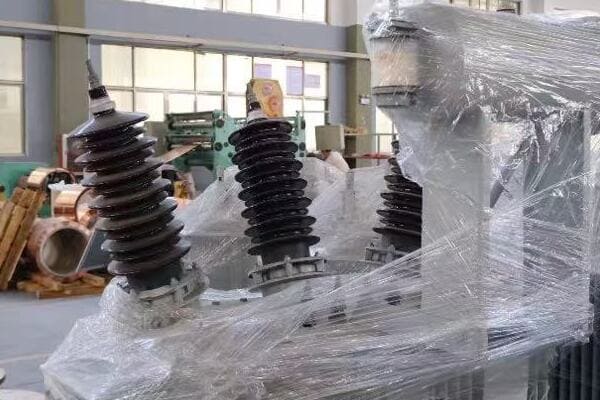
Key Aspects of Top Chinese Transformer Suppliers
Let’s examine the main players in the Chinese residential transformer market:
- CHBEB (China Bei Er Bian Group)
- CHINT Electric
- TBEA Co., Ltd
- Comparison of Key Features
- Factors to Consider When Choosing a Supplier
CHBEB (China Bei Er Bian Group)
Specializing in customized transformer solutions:
- Wide range of voltage options: 6kV to 20kV
- Quick lead times: 15-25 days
- Strong focus on residential and commercial applications
I recently worked with CHBEB on a large residential complex project. Their ability to customize transformers to our specific voltage and installation requirements, combined with their quick turnaround time, was instrumental in keeping the project on schedule.
CHINT Electric
Known for standardized, cost-effective products:
- Comprehensive range of low and medium voltage transformers
- Strong distribution network across China and globally
- Focus on energy-efficient models
During a recent affordable housing project, we sourced transformers from CHINT. Their standardized product line offered a good balance of quality and cost-effectiveness, which was crucial for the project’s budget constraints.
TBEA Co., Ltd
Excelling in high-capacity and specialized transformers:
- Expertise in large-scale power projects
- Advanced R&D capabilities
- Strong presence in both domestic and international markets
Here’s a comparison of these top suppliers:
| Supplier | Voltage Range | Lead Time | Certifications | Strengths |
|---|---|---|---|---|
| CHBEB | 6kV – 20kV | 15-25 days | ISO, CE, IEC | Customization, residential expertise |
| CHINT | 10kV / 11kV | 20-30 days | KEMA, GB | Cost-effective, wide product range |
| TBEA | 10kV – 35kV | Project-based | National laboratory certified | High-capacity solutions, R&D strength |
Comparison of Key Features
Evaluating crucial aspects:
- Product range and specialization
- Quality control and certifications
- Customization capabilities
- After-sales support and warranty
Factors to Consider When Choosing a Supplier
Making an informed decision:
- Project-specific requirements (voltage, capacity, installation type)
- Budget constraints and long-term cost considerations
- Delivery timelines and logistics
- Technical support and local service availability
Key points about top Chinese transformer suppliers:
- CHBEB offers strong customization capabilities for residential projects
- CHINT provides cost-effective, standardized solutions
- TBEA excels in high-capacity and specialized transformer solutions
- Consider factors beyond just price when selecting a supplier
- Evaluate the supplier’s ability to meet your specific project needs
In my experience, the choice of supplier can significantly impact project success. I recall a multi-phase residential development where we initially chose different suppliers for each phase to compare performance. CHBEB’s customized approach and responsive support in the first phase set them apart, leading us to standardize on their transformers for subsequent phases. This decision streamlined our procurement process and ensured consistent quality across the entire project.
For example, in a recent smart city project requiring advanced monitoring capabilities, we evaluated several suppliers. CHBEB’s willingness to integrate IoT features into their standard residential models, combined with their competitive pricing, made them the ideal choice. Their transformers have since become a key component in the city’s smart grid infrastructure.
As we conclude our discussion on transformer selection, remember that choosing the right supplier is as crucial as selecting the right transformer model. The best supplier for your project will offer not just quality products, but also the support and flexibility to meet your specific residential power distribution needs.
FAQs: House Transformer Selection for Developers and Buyers
To address some common questions about selecting house transformers for residential projects:
-
How do I know what size transformer I need for a housing project?
To determine the right size, calculate the total expected load of all homes and common areas, considering factors like average household consumption, diversity factor, and future growth. A general rule of thumb is 5-7 kVA per household, but this can vary based on the specific appliances and lifestyle of residents. It’s best to work with an electrical engineer to perform a detailed load calculation. -
What’s the standard voltage for residential transformers?
Standard voltages vary by region. In North America, common residential voltages are 120/240V single-phase or 120/208V three-phase. In many other countries, 230/400V three-phase is standard. The input voltage to the transformer typically ranges from 4kV to 34.5kV, depending on the local distribution network. Always confirm voltage requirements with your local utility company. -
Can I install a single transformer for 50 homes?
Yes, it’s possible to use a single transformer for 50 homes, but the feasibility depends on several factors including the average power consumption per home, peak load expectations, and local utility regulations. For 50 homes, you might consider a three-phase transformer in the range of 300-500 kVA, but a detailed load calculation is essential for accurate sizing. -
What’s the delivery time for pad-mounted residential transformers?
Delivery times can vary significantly based on the manufacturer, customization requirements, and current demand. For standard models, delivery times typically range from 4 to 12 weeks. Custom or high-capacity units may take longer. At CHBEB, we strive to deliver standard pad-mounted transformers within 15-25 days, but it’s always best to confirm lead times when placing an order, especially for large or complex projects. -
How do I choose between single-phase and three-phase transformers for a residential project?
The choice depends on the size and power requirements of your project. Single-phase transformers (typically up to 167 kVA) are suitable for individual homes and small residential groups. Three-phase transformers are ideal for larger residential complexes, apartments, and mixed-use developments. Consider factors like total load, types of appliances (especially any large three-phase equipment), and future expansion plans. Three-phase systems generally offer more power and better efficiency for large loads. -
What are the key factors to consider when choosing between pole-mounted and pad-mounted transformers?
Consider the following:- Available space: Pad-mounted requires ground space, pole-mounted needs minimal ground area.
- Aesthetics: Pad-mounted can be more easily concealed.
- Safety: Pad-mounted offers better protection from weather and physical damage.
- Maintenance accessibility: Pole-mounted may be easier to access in some cases.
- Local regulations: Some areas may have specific requirements or preferences.
- Cost: Initial installation costs often differ between the two types.
-
How energy-efficient should my residential transformer be?
Aim for transformers with efficiency ratings of 98% or higher at 50% load. High-efficiency transformers may have a higher upfront cost but can lead to significant energy savings over time, especially in large residential projects. Look for models that comply with or exceed the latest energy efficiency standards in your region, such as the DOE 2016 efficiency standards in the U.S. or the EU’s Ecodesign requirements. -
What certifications should I look for when selecting a transformer supplier?
Key certifications to look for include:- ISO 9001 for quality management systems
- ISO 14001 for environmental management
- IEC 60076 compliance for power transformers
- Regional certifications like KEMA (Europe), ANSI (North America), or GB (China)
- Safety certifications such as UL or CE marking
Additionally, check for any specific certifications required by your local utility or regulatory bodies.
Conclusion
Selecting the right transformer for your residential project is a critical decision that impacts the safety, efficiency, and long-term success of your power distribution system. By carefully considering factors such as voltage requirements, load calculations, phase options, and installation types, you can make an informed choice that best serves your project’s needs. Remember to factor in future growth, energy efficiency, and the specific requirements of your residential development.
Working with reputable suppliers and consulting with experienced electrical engineers can help ensure you select a transformer that not only meets your current needs but also provides the flexibility and reliability required for future expansion. Whether you’re developing a small suburban community or a large mixed-use complex, the right transformer choice sets the foundation for a robust and efficient electrical infrastructure.
Thank you for joining me in this exploration of house transformer selection. Stay curious, stay informed, and let’s keep pushing the boundaries of what’s possible in power distribution and electrical engineering.
Free CHBEB Transformer Catalog Download
Get the full range of CHBEB transformers in one catalog.
Includes oil-immersed, dry-type, pad-mounted, and custom solutions.
Quick Message
Request A free quote
We'd like to work with you
- +86 15558785111
- chbebgroup@chbebpower.com
- +86 15558785111
What We Do
CHINA BEI ER BIAN (CHBEB) GROUP, with 218 million in registered capital, originated from Beijing Beierbian Transformer Group. Headquartered in Beijing for R&D, it operates major production bases in Nanjing and Yueqing, producing high-quality products.
Latest Product
address
BeiJing
No 3,RongJing East Road,BeiJing Economic Technological Development Area,BeiJing,China
JiangSu
No 7️Xiangfeng Road,Jiangning,NanJing,JiangSu,China
WenZhou
No.211, Wei 16 Road, Industrial Zone, Yueqing, Wenzhou, Zhejiang, China.
XiangYang Industrial Zone ,YueQing,WenZhou,ZheJiang,China
contact us
- chbebgroup@chbebpower.com
- +86 13057780111
- +86 13057780111
- +86 15558785111
Copyright © Bei Er Bian Group


